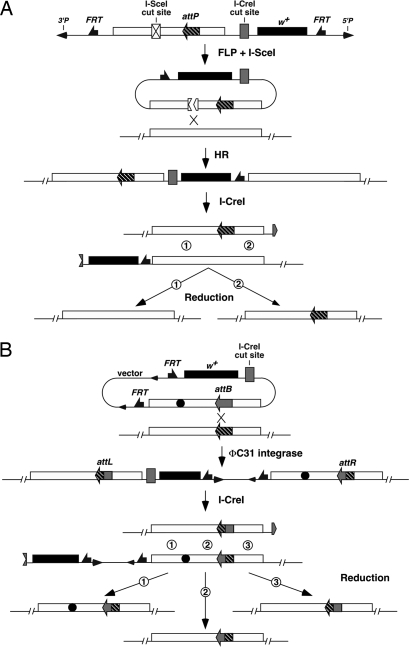Fig. 1.
A schematic overview of SIRT. (A) Current ends-in targeting scheme followed by reduction for attP placement. At the top is the donor P element. FLP and I-SceI generate a linear extrachromosomal donor molecule. Homologous recombination (HR) integrates the donor into the target locus, creating a tandem duplication. I-CreI cuts between the target copies. Recombination at region 1 leads to an unchanged wild-type copy, whereas recombination at region 2 leads to a copy with the attP site. (B) phiC31-mediated site-specific integration followed by I-CreI-induced reduction. Note that the integrated donor is the entire plasmid carrying vector sequences that include FRTs and P ends. The donor plasmid also carries the desired modification (filled circle). Recombination between attP and attB creates attR and attL sites that are no longer the targets for phiC31. I-CreI-induced recombination that occurs at region 1 leads to a target gene carrying the modification and attR. Recombination at region 2 leads to a normal target gene with attR, which can serve as a control locus in subsequent phenotypic analyses. Recombination at region 3 leads to a normal target gene with attL.

